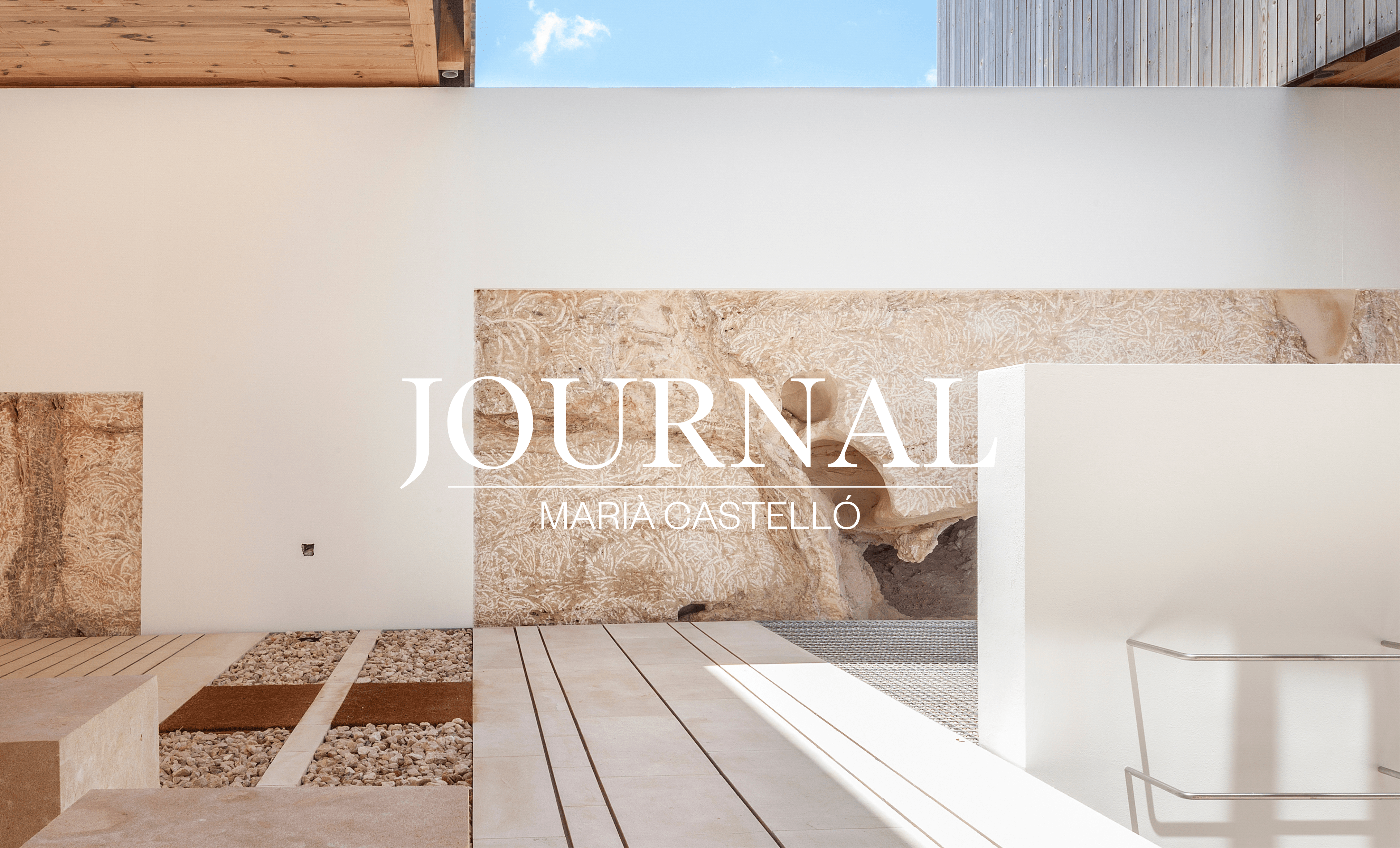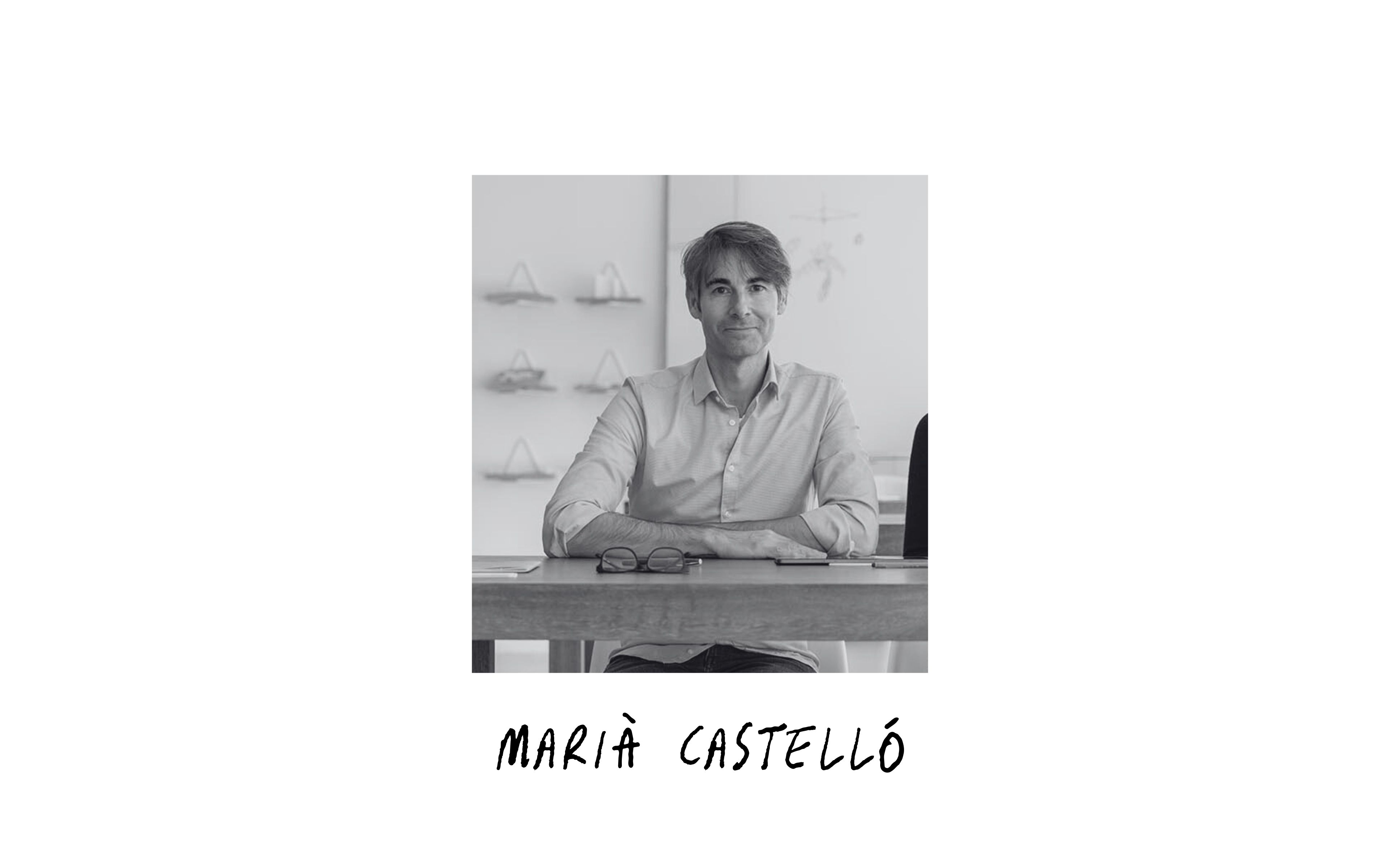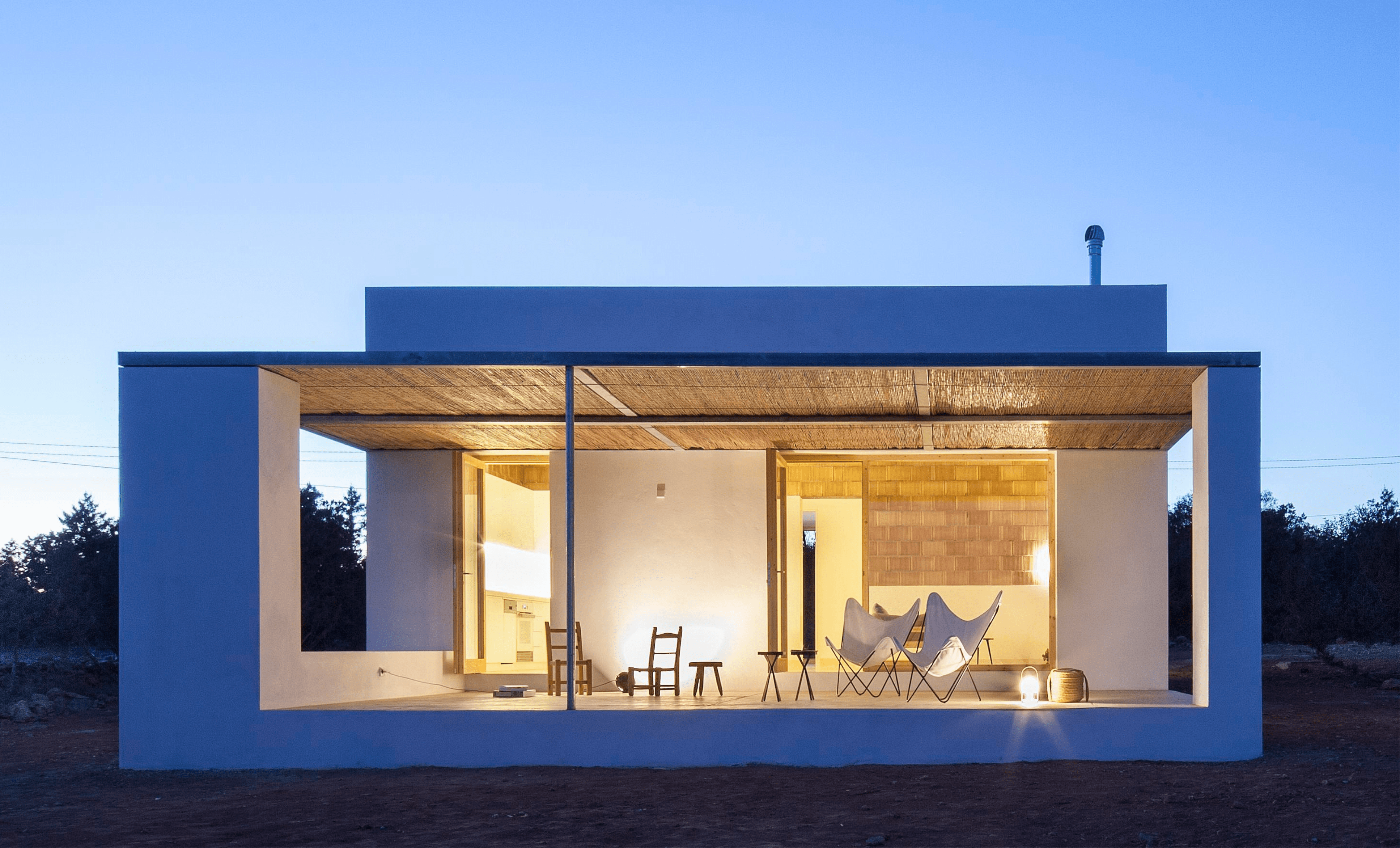Para español, haga clic aquí.
Set in the Mediterranean, off the coast of Spain, lies the island of Formentera. Its sister island, Ibiza, is a short, 30-minute ferry ride north, but unlike its sister, Formentera is not known for its nightlife.
Instead, Formentera is a tranquil retreat, all pristine beaches and turquoise water. Only reachable by sea, visitors are encouraged to rent bikes for exploring its 82 square kilometres. It’s also the home of Marià Castelló, a prominent Spanish architect who first caught Dayne Lawrie’s attention with his ‘Fragments’ project. This journal offers a brief glimpse into his world and his practice.
Landscape: The Architect
It’s clear from Marià’s architecture that the natural landscape is given its own role in design. With homes that incorporate resident stone, the natural and man-made are frequently blurred and combined. When looking at his homes, the inclusion feels natural, the home an extension of the earth itself.
The ease of this relationship is testament to his skill and demonstrates his unique approach to architectural design. It’s an awareness of landscape as an architect, worth listening to at every step and from the very beginning.
‘We talk about designing landscape, architecture, interior design and object design at the same time, as a whole.’
The landscape is not just analysed as part of a process but viewed as an ongoing partner. You have to consider its temperaments and conditions. ‘You have to be very attentive,’ Marià says.
His attention is clear in his designs, yet his approach to the architecture itself seems at odds with his homes’ affinity to their landscapes. Marià explains, ‘The architecture comes later, often more by contrast than by mimesis.’
It’s not about imitating scenery but creating something that complements and draws perspective. He explains further,
‘It is about finding a harmony that resonates with different frequencies.’
His approach to design has proven to set his work apart. But bringing these blueprints to life on an island as small as Formentera unearths other problems.
Island Sourcing & Circularity
Realising these designs on an island only accessible by boat provides Marià Castelló’s practice with a unique set of challenges. Marià’s approach is as simple as it is profound.
He looks to those who have always practiced circularity, referencing ‘Architecture Without Architects’ by Bernard Rudofsky as ‘una fuente de sabiduría’ or a fountain of wisdom. The book was named after his famous 1964 MoMA exhibit. Controversial and deeply criticised at the time, the exhibit showcased images of architecture around the world, including indigenous designs and buildings. In a time of rapid change, Rudofsky dared to explore architecture as a universal experience that happens outside of modernism or contemporary education.
Within ancient and indigenous structures lies important insight for architecture today. Part of which, Marià comments, are the circularity, kilometre-zero materials, self-sufficiency and passive bioclimatic solutions that occurred naturally and inevitably. A result of living in close connection with one’s surroundings.
‘I think that it is key to know how to look to the past without feeling nostalgic but also without falling into amnesia.’
Marià’s work embraces architectural advances without forgetting past revelations.
Protecting an Island Ecosystem
In a 2022 interview, Marià made note of wanting to protect Formentera from urban sprawl and cheap, repetitive buildings.
Today, Marià’s approach to conscientious design has contributed to the name he’s made for himself. While he humbly points out his practice’s interventions are a small portion of the efforts carried out, he does acknowledge their projects have gained significant recognition and interest from the public.
His hope for the attention is that it raises awareness and curates respect for their island.
‘I think that above it all, it is about promoting an attitude of awareness, participation and sensitivity. That everyone feels responsible.’
His care for local landscapes and ecosystems not only determines how he orients his architecture but the materials used for the build as well.
Marià’s holistic approach makes his homes even more impressive, yet it was his work in miniature that first grabbed Dayne’s attention.
The Fragments Project
Fragments d’Arquitectura was a project ‘for pure pleasure’ that came about in 2019 when Marià was searching for a way to play with elements of architecture more freely and without restraint.
‘Architecture is a magnificent discipline, but it takes an enormous amount of time to carry out, countless adjustments, changes, compromises…’
The answer to his desire for freedom and agility was found in 20x20x5 centimetres.
‘Fragments’, much like his other projects, blurs boundaries between disciplines, but Marià says, ‘the important thing is the exercise of synthesis in order to concentrate a great symbolic and spatial charge in a “moment of small dimensions”.’
Certain pieces reference heritage works his practice has worked on closely, and each ‘moment’ contributes to a bigger whole, with infinite possibilities in their arrangement. So, while Marià comments that the project is like a game, his ‘moments’ succeed in carrying symbolic and spatial charge.
Conscientious Architecture
From expansive homes to their representation in miniature, to know Marià Castelló’s work is to know the land it comes from. His holistic approach, where landscape is inseparable from design, will remain in our minds. As the movement towards earth-conscious architecture grows, we hope to see circularity and sustainability become natural solutions once more.








